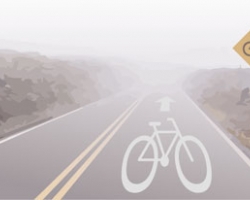In November, the Culver City City Council unanimously adopted the Bike and Pedestrian Master Plan (BPMP), which was the product of a year and a half of research, and based on the input of community members, including residents, owners and employees of local businesses, visitors and city officials.
In the introduction section of the BPMP document, the city expresses its Complete Streets policy, which states that the city is “embracing a new vision of transportation planning, recognizing that it is essential to enhancing the quality of life for not only residents and visitors, but also the broader community and world. To this end, the city is adopting the concept of Complete Streets, which emphasizes a balanced transportation system that considers all users of the road when planning development and transportation projects, whether cyclists, pedestrians, transit riders or vehicles.”
The plan goes on to articulate its principal goal, “To transform the city into a place with an extensive bicycle and pedestrian network that allows travelers of all levels and abilities to feel comfortable walking and biking to their destinations. In so doing, encourage more people to forgo car trips, when possible, in favor of alternative forms of transportation and become truly bicycle and pedestrian friendly.”
What does the phrase “consider all users of the road when planning development” mean? For example, if a city planner thought of only automobile drivers, he or she may think that nicely landscaped street medians would be a good addition to a business district. Medians may provide a pleasant view but are of little or no utility to pedestrians or cyclists (or drivers, for that matter). On the other hand, slowing down traffic, adding bike lanes and widening sidewalks to accommodate shade trees and benches may create a friendlier atmosphere, while increasing business at the same time.
In West Palm Beach, Fla., a combination of traffic-calming measures and investment in public spaces in the early 1990s transformed the dilapidated downtown area into a vibrant city center. Some of the those measures included raised intersections, narrowed streets, conversion of one-way to two-way streets, and the removal of turn lanes. All of these measures slow down traffic by signaling to the driver that this is a pedestrian zone. Within a few years, commercial space went from 20% occupation to 80% and property values more than doubled. The city’s $10 million investment was overshadowed by more than $300 million in private investment in the area.
Closer to home, the city of Long Beach, Calif., has added a number of improvements to the downtown area to slow traffic and facilitate non-automobile trips. A new Bicycle Boulevard on Vista Street allows families to ride safely from their homes to several local schools. The boulevard includes roundabouts to slow drivers, as well as a special signal that provides safe bicycle/pedestrian crossing of a major street while preventing cut-through traffic from non-resident drivers.
On Second Street, Long Beach has introduced green sharrow lanes, which remind drivers that they will be sharing the road with cyclists, as well as to indicate to cyclists the safest place to ride in the road. At Third Street and Broadway, the city is finishing construction of separated bikeways, which allow cyclists full, protected access to these major thoroughfares.
Long Beach has also begun to replace selected automobile parking spots with bike corrals, which include space for 14 bicycles. Residents and business owners are excited about the expanded access to and increased foot traffic within the downtown business district.
Taking the incomplete, automobile-only viewpoint, one might see Culver City as a point between Marina del Rey and Beverly Hills. From the Complete Streets viewpoint, Culver City resembles a place where people would want to live and work. Residents, business owners and employees, and city officials stand to benefit from keeping the Complete Streets concept in mind when making decisions regarding the future development of the city.
Bike Safe, Bike Smart! is a weekly column to promote responsible cycling by providing information, education and advice about riding. It’s written by members of the Culver City Bicycle Coalition (CCBC), a local chapter of the Los Angeles County Bicycle Coalition. The CCBC hosts a Family Ride each month. For more information, go to ccbike.org.













